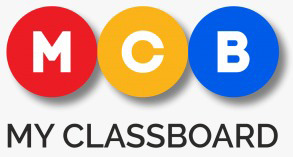
Speech or speaker recognition is the ability of a machine or program to understand and execute spoken commands. Voice recognition is popular thanks to the utilization of AI and smart assistants, like Amazon's Alexa, Apple's Siri, and Microsoft's Cortana. The voice recognition system allows consumers to interact with technology through simple conversations, enabling hands-free requests, reminders, and other simple tasks.
The speech recognition software within the computer requires the conversion of analog audio to digital signals, which is named analog-to-digital conversion. For a computer to be able to decipher the signal, it must have a digital database or vocabulary of words or syllables, and a quick way to compare these data with the signal. The sound mode is stored on the hard drive and loaded into the memory while the program is running.

In fact, the effective vocabulary of a speech recognition program is directly related to the random access memory capacity of the computer on which it is installed. Compared to searching for a few matches on the hard drive, if the entire vocabulary can be loaded into RAM, the speech recognition program will run many times faster. Processing speed is also critical because it affects the speed at which the computer searches for matches in RAM.
Although speech recognition technology originated in personal computers, it has gained recognition in the commercial and consumer fields of mobile devices and home assistant products. The popularity of smartphones provides the opportunity to bring voice recognition technology into consumers' pockets, while home devices such as the Google Home and Amazon Echo have rought voice recognition technology to the living room and home. kitchen room. The combination of speech recognition and the increasing stability of IoT sensors (internet of things) has added a technical layer to many consumer products that previously lacked smart features.
Voice Recognition enables consumers to handle multiple tasks by speaking directly to their Google Home, Amazon Alexa, or other voice recognition technology. Using machine learning and sophisticated algorithms, speech recognition technology can quickly convert your speech work into transcription.
Although the accuracy rate is improving, all speech recognition systems and programs will make mistakes. Background noise can cause stray entry, which can be avoided by using the system in a
quiet room. There are also problems with words that have the same pronunciation but different spellings and different meanings, such as listen and here. This problem can one day be overcome to a large extent by using stored contextual information. However, this may require more RAM and faster processors than are currently available in personal computers.
- Scardina, Jesse. “What Is Voice Recognition (Speaker Recognition)? - Definition from Whatis.com.”
- SearchCustomerExperience, TechTarget, 31 Jan. 2018, searchcustomerexperience.techtarget.com/definition/voice-recognition-speaker-recognition.





